Air Operations, Carolines - 20 5th Heavy Bom Group B-24s and 18 307th Heavy Bomb Group attack the Truk Atoll.
- During the night, VII Bomber Command B-24s attack the Truk Atoll.
[  | |   ] ]
Air Operations, CBI
BURMA
- 15 10th Air Force B-25s attack the Tiddim-Imphal road.
- A small number of P-40s attack the Mogaung area.
CHINA
- 14th Air Force B-25s, P-51s, and P-40s attack the Pingkiang area.
- P-40s support Chinese Army ground forces at Tantangtzu and Watien, and attack barges in the Gulf of Tonkin and on Tungting Lake.
INDIA
- 10th Air Force B-25s airlift ammunition to Imphal.
[  | |   ] ]
Air Operations, Europe A Ju-290 lands in northern Greenland and rescues a 26-man team of meteorolgists that were left there by U-boat in August 1943.
RAF BOMBER COMMAND
Evening Ops:
- 96 Lancasters of No. 5 Group and 4 Pathfinder Mosquitos attack the important German signals station at Ferme d'Urville which had escaped serious damage from a raid two nights previous. 3 of the Oboe Mosquitos place their markers perfectly and the Lancasters wipe out the stations.
- 127 Lancasters and 8 Mosquitos of Nos. 1, 3 and 8 Groups continue the deception raids on coastal batteries batteries at Calais and Wimereux. The bombing is accurate and there are no aircraft losses.
Other Ops:
- 20 Mosquitos are sent to Ludwigshafen, and 5 to Argentan, 57 aircraft lay mines from the Scheldt River to Dunkirk, and there are 6 Serrate and 3 Intruder patrols and 4 RCM sorties.
US 8th AIR FORCE
FRANCE:
- During the morning, despite heavy cloud cover, 219 8th Air Force B-17s and 120 B-24s attack tactical targets, mostly coastal-defense positions, in the Pas-de-Calais area.
- 45 bombers are damaged by flak
- Specially equipped B-17s of the 492nd Heavy Bomb Group's 36th Heavy Bomb Squadron mount the USAAF's first daylight radio-countermeasures sorties of the war. The objective is to jam or confound the range-finding radars controlling Luftwaffe flak batteries.
- During the afternoon, 97 8th Air Force B-17s and 98 B-24s attack tactical targets, mostly coastal-defense postions, in the Pas-de-Calais area.
- 2 B-17s are damaged, 1 P-51 escort fighter and its pilot are lost to mechanical failure
US 9th AIR FORCE
FRANCE:
- More than 250 IX Bomber Command B-26s and A-20s attack air fields, coastal-defense batteries, and highway bridges in northern France.
- Throughout the day, more than 400 9th Air Force P-38 and P-47 dive-bombers attack numerous targets in France and throughout northern Europe.
US 12th AIR FORCE
IITALY:
- 12th Air Force B-25s and B-26s attack rail and road bridges throughout central Italy.
- XII TAC fighter-bombers provide direct and close support for the Allie ground force along the battlefornt.
US 15th AIR FORCE
YUGOSLAVIA:
- Most of the 15th Air Force is grounded by bad weather, but 36 B-24s are able to attack military targets at Omis.
- 38 B-24s attack the port and town areas at Split.
[  | |   ] ]
Air Operations, New Guinea - V Bomber Command B-24s, B-25s, and A-20s attack Japen Island, Mokmer, Seroei, shipping off Manokwari, and the airfields on Normfoor and Biak and Timoeka.
- V Fighter Command P-38s attack the airfield at Babo, where many Japanese aircraft are destroyed on the ground.
- P-47s and P-40s attack Sawar airfield, dumps at Sarmi and along the Kai River, and coastal barge and troop hideouts.
- 5th Air Force B-24s and fighter-bombers attack coastal targets between Hansa Bay and Wewak.
- Planned attacks by V Bomber Command B-24s against Japanese Army positions on Biak Island are hindered by bad weather.
- Between 1105 and 1132 hours, 9 G4M 'Betty' bombers and 32 A6M Zeross based at the Sorong airfield, along with 10 Japanese Army fighters based at the airfield at Samate, attack a flotilla of destroyers and landing craft off Biak. Delayed by bad weather, 348th Fighter Group P-47s arrive at 1120 hours and immediately attack the Japanese aircraft, which are either shot down or driven away.
- 348th Fighter Group P-47s down 6 Japanese fighters over Biak Island at 1120 hours. 49th Fighter Group P-38s down 12 Japanese fighters over the Babo airfield at 1130 hours.
[  | |   ] ]
CBI
BURMA
The Chinese and American forces of the 42nd, 150th and 89th Regiments launch an assault on the Japanese positions, but are driven back with heavy losses, especially to the Americans. The Japanese rearguard leaves Kohima.
INDIA
The CCS instructs Adm Lord Louis Mountbatten, SEAC commander, to concentrate his efforts on opening an overland route to China, employing all the resources he has currently available in theater.
[  | |   ] ]
Eastern Front Heavy fighting continues to rage on the Rumanian front, but the Germans can make little headway against fierce Russian resistance.
[  | |   ] ]
France The French Committee of National Liberation proclaims itself the provisional government of the Republic.
[  | |   ] ]
Italy The US forces advancing on Rome take Albano and Frascati. Other American and French units move forward along Route 6. In the British 8th Army sector the Canadian I Corps take Anagni.
Hitler authorizes Kesselring to withdraw from Rome. The disengagement operation has already been in progress for some time; according to Kesselring's plan, fighting south and southeast of Rome must be kept up as long as possible to allow the troops stationed in the city to be evacuated, and particularly to let the 14th Army retire beyond the Tiber. The operation is successful. Moreover, respecting the status of 'open city' proclaimed for Rome since August 13, 1943, and also in accord with an agreement made with the Resistance, the troops on leaving the city do not blow up the bridges over the Tiber nor any other buildings. In exchange, the partisans do not harass the retiring troops.[MORE]
[  | |   ] ]
New Guinea There are various Japanese attempts to bring reinforcements to Biak between now and 12 June but all are abortive. On Biak, TF HURRICANE's 186th Infantry continues to move west on a broad front to positions north of Parai, but are held up more by the nature of the terrain than by the enemy. The supply line is tenuous and water must be brought inland from the coast. The 162nd Regiment, also advancing westward, is halted by the Japanese manning the Ibdi area. The Americans decide that they must eliminate this pocket before continuing the advance.
Engineer, anti-aircraft, radar, and artillery units move to Owi Island.
In the Hollandia-Aitape area, the Japanese in the TF PERSECUTION zone are still active around Yakamul and bypass Herrick Force to reach positions west of Yakamul.
[  | |   ] ]
Norwegian Sea Canso 'T' of No 162 Squadron RCAF sights a surfaced U-boat and attacks with 6 depth charges. The explosions appear to lift U-477 out of the water. She then swings to port, stops and sinks.
U-477|
| Class | Type VIIC |
| CO |
Oberleutnant zur See Joachim Jensen |
| Location |
Norwegian Sea, NE of Shetlands |
| Cause |
Air attack |
| Casualties |
51 |
| Survivors |
None |
[  | |  ] ]
Images from June 3, 1944
New Zealand Tank Transporter
|
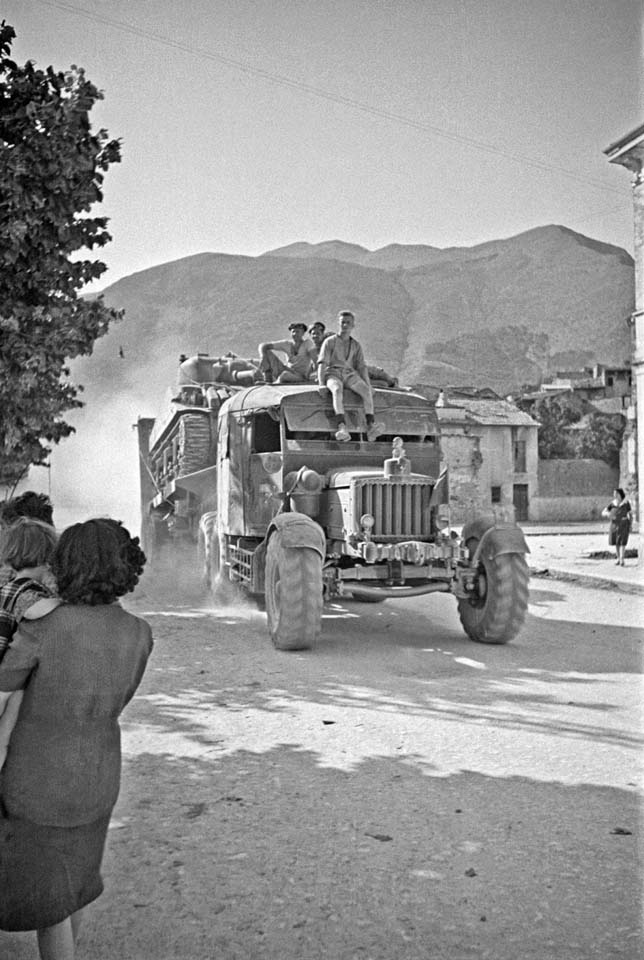 |
|
Changing Transportation
|
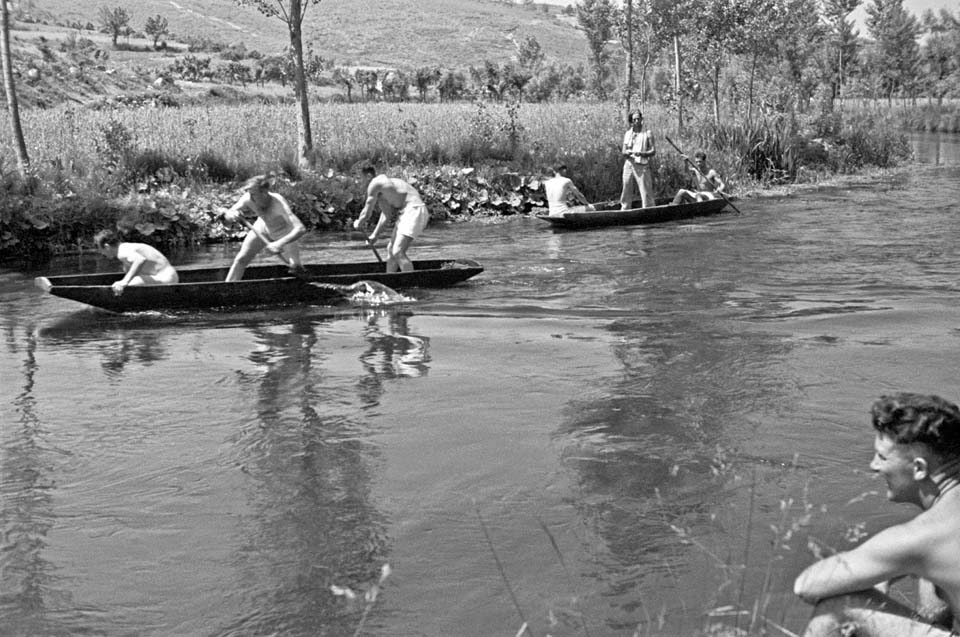 |
|
Commandos Aboard an LCI
|
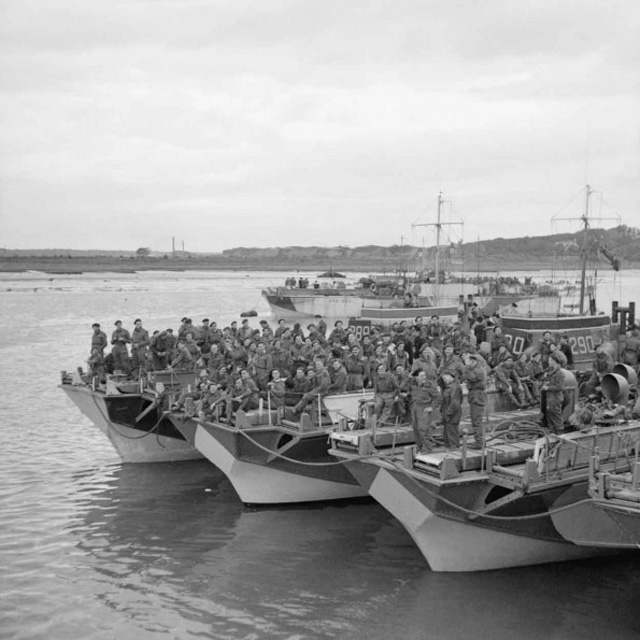 |
|
Troops Cleaning Their Rifles
|
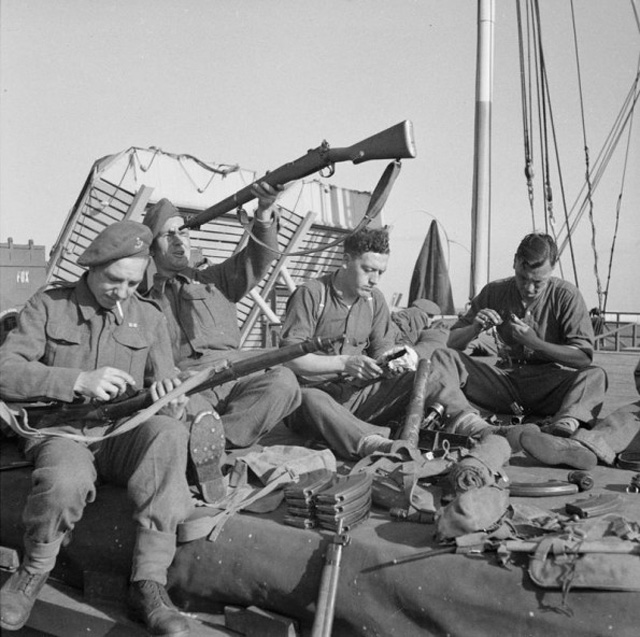 |
|
Canadian Troops Move through Frosinone, Italy, 3 June 1944
|
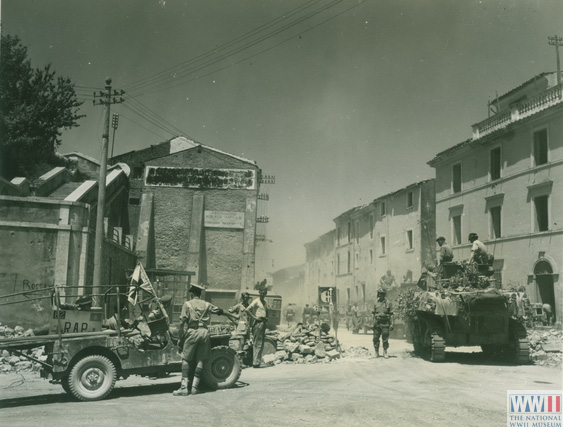 |
|
Armor Ready To Be Loaded
|
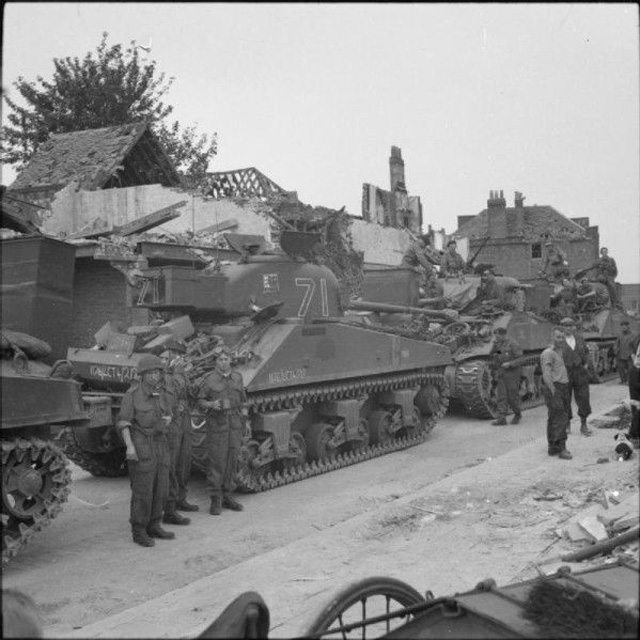 |
|
Enjoying the Sunshine
|
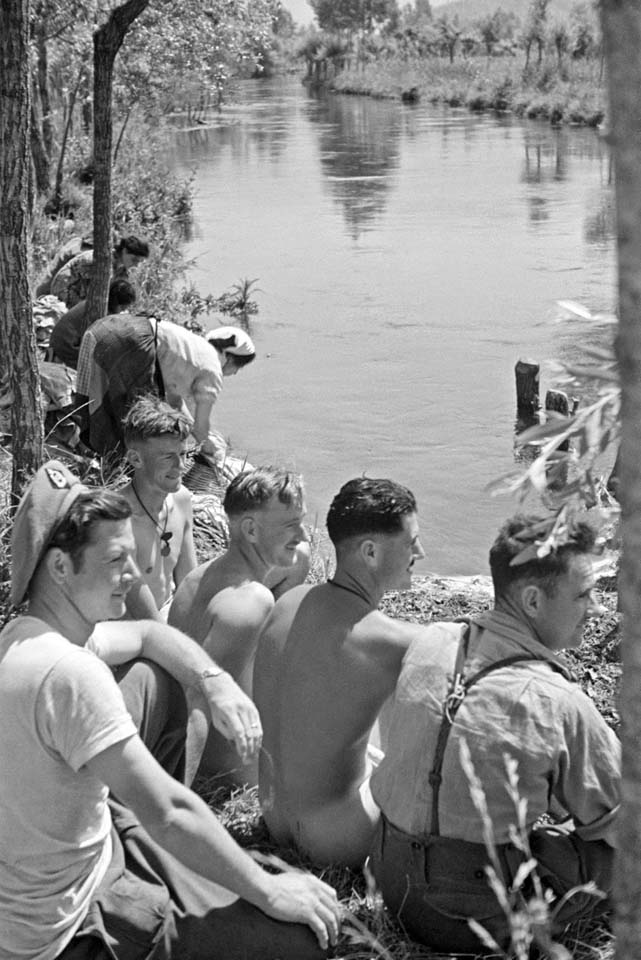 |
|
A Gesture of Thanks
|
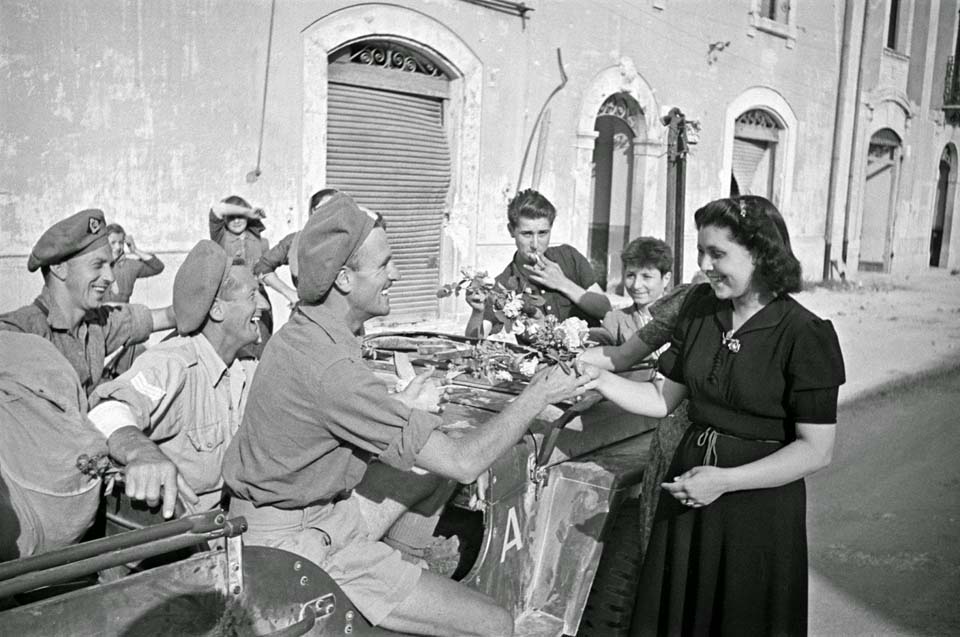 |
|
Moving Through Frosinone
|
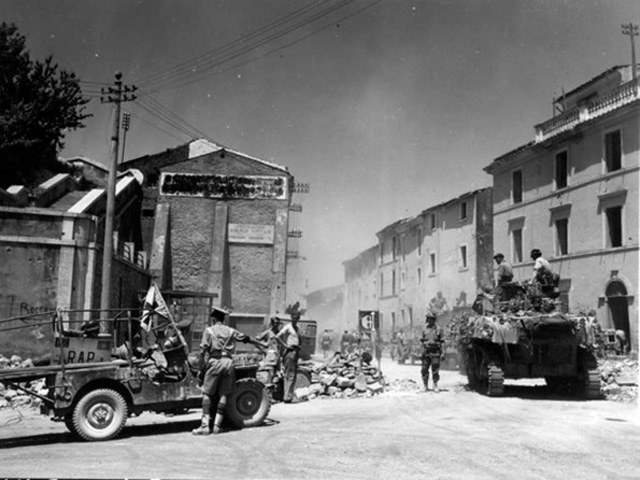 |
|
Discussing Invasion Currency
|
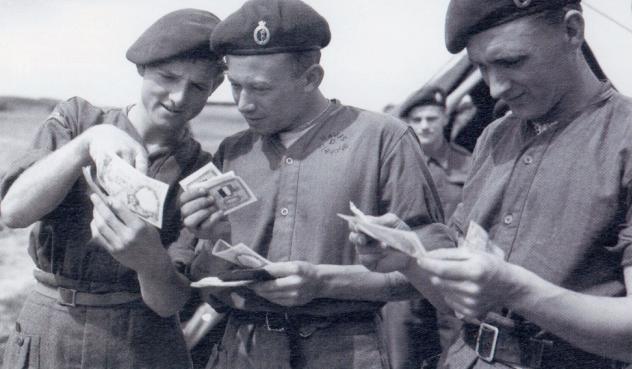 |
|
Piper Entertaining Commandos
|
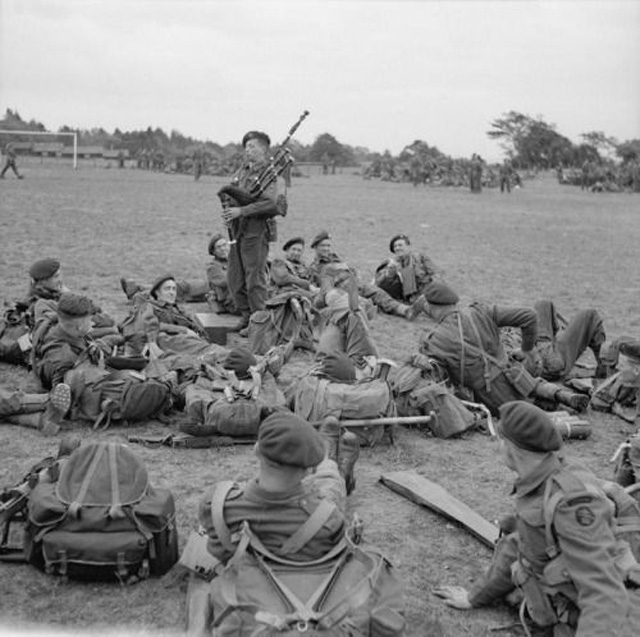 |
|
Music on the Banks of the Fibrino River
|
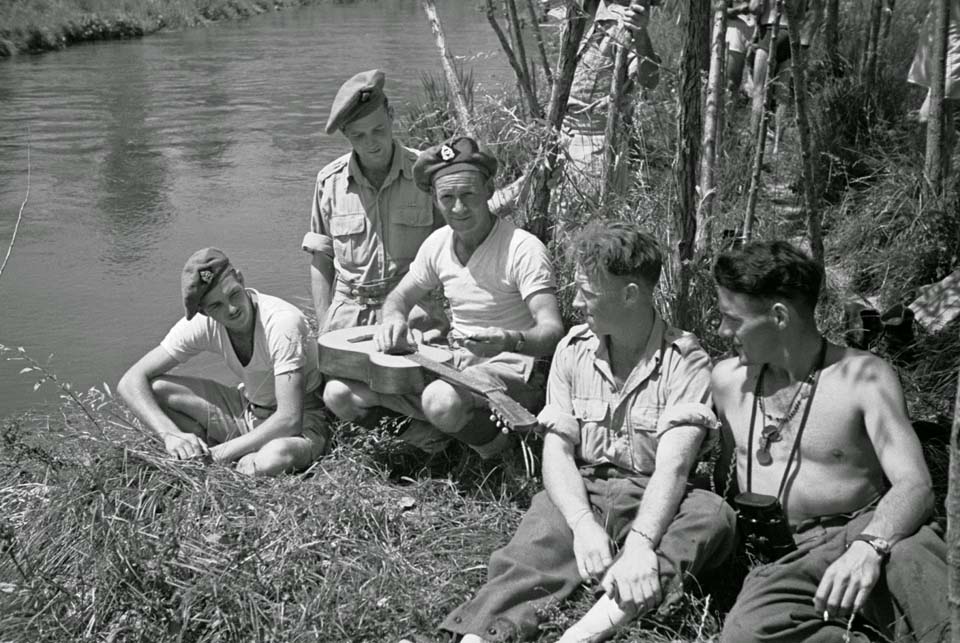 |
|
|











